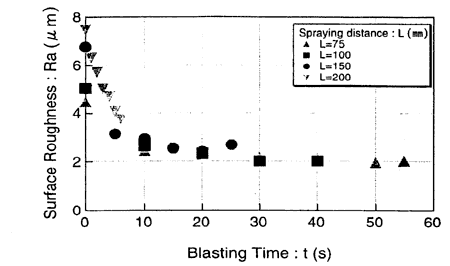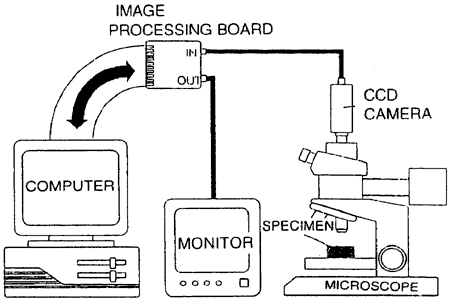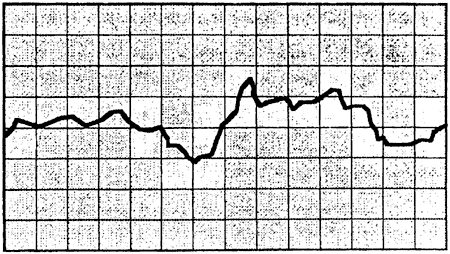
Fig. 10 Surface roughness
Due to the impingement of grits the roughened surface changes to a smoother one. Fig. 11 (a)-(c) show the SEM photographs of the blasted surface at the blasting time t = 10, 20 and 30s. As compared with the initial surface (t=0 s) as shown in Fig. 1, a smoothing process is clearly observed.

Fig. 11 SEM photographs of blasted surfaces
4.2 Fractal dimension
Surface roughness is a measure to represent a degree of rugged feature for a surface and doesn't say the characteristics of surface profiles. Recently a mathematician Mandelbrot [9] has developed fractal geometry with fractional dimension. Fractal dimension can represent a characteristic property of a profile which is different from surface roughness. Fractal analysis has been applied successfully to the evaluation of the blasted substrate for thermal spraying [10].
Of several methods available to evaluate fractal dimension, we will apply the box-counting method [11] to the evaluation. Fig. 12 shows the system for the valuation of fractal dimension. A specimen is set under the optical microscope. Its image is taken by the CCD camera and recorded data are stored in the computer through an image processing board. The stored original image is processed in the binary system and finally the profile corresponding to the roughened surface is determined. The plane containing the profile is covered with square of side length d as shown in Fig.13.

Fig. 12 Evaluating system of fractal dimension

Fig. 13 Box-counting technique
BACK CONTENTS NEXT